-
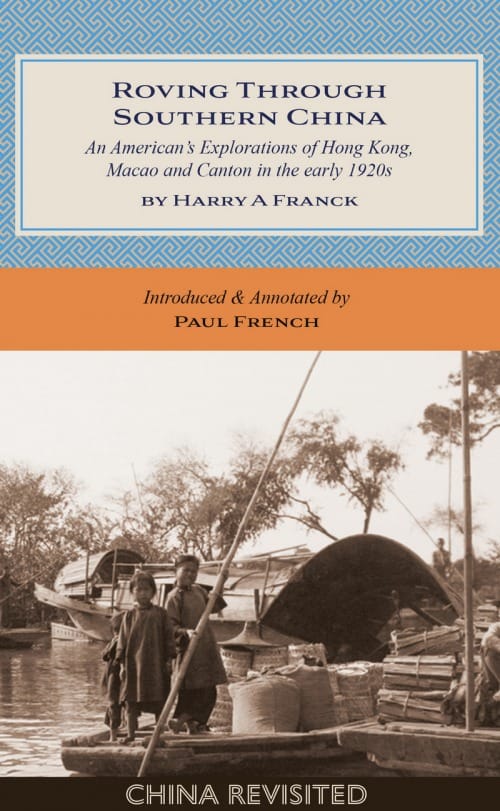 By Harry Franck, introduced and annotated by Paul FrenchNo. 4 in the China Revisited seriesIn the 1920s the American travel writer Harry A Franck was known to readers as the “Prince of Vagabonds”. His wanderings were family affairs and he arrived in southern China in 1923 with his wife, their two young children and his mother. Franck always claimed that his travel plans were random, subject to chance encounters and whatever caught his eye.He arrives in a Hong Kong which is building modern department stores and large houses while labourers sleep on straw mats beside the harbour. In Macao he visits temples, ancient forts and, of course, casinos. And then to Canton (Guangzhou), a city in flux where new buildings are transforming the waterfront, the ancient city walls are being demolished, and the traditional rookeries of small lanes are being replaced by wide asphalt roads as the city rapidly modernises. Franck also provides us with a highly detailed description of Shamian Island a year after the tumultuous strikes and boycotts that meant naval gunboats and barbed wire still protected the small foreign enclave.
By Harry Franck, introduced and annotated by Paul FrenchNo. 4 in the China Revisited seriesIn the 1920s the American travel writer Harry A Franck was known to readers as the “Prince of Vagabonds”. His wanderings were family affairs and he arrived in southern China in 1923 with his wife, their two young children and his mother. Franck always claimed that his travel plans were random, subject to chance encounters and whatever caught his eye.He arrives in a Hong Kong which is building modern department stores and large houses while labourers sleep on straw mats beside the harbour. In Macao he visits temples, ancient forts and, of course, casinos. And then to Canton (Guangzhou), a city in flux where new buildings are transforming the waterfront, the ancient city walls are being demolished, and the traditional rookeries of small lanes are being replaced by wide asphalt roads as the city rapidly modernises. Franck also provides us with a highly detailed description of Shamian Island a year after the tumultuous strikes and boycotts that meant naval gunboats and barbed wire still protected the small foreign enclave. -
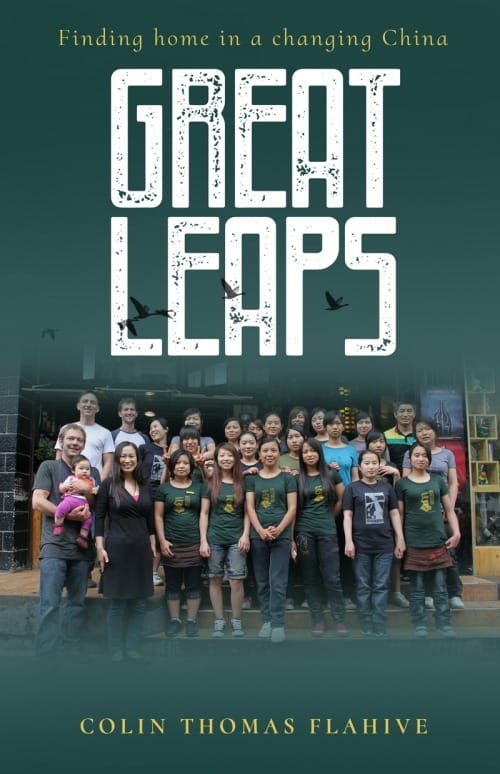
In Great Leaps, Colin Flahive explores China’s rural-urban migration against the backdrop of his own transition from Colorado to southwest China. There, in Yunnan province, he partnered with three friends to open a café that became much more than simply an outpost of Western cuisine in a far-flung corner of the world.
Over the course of a decade, Salvador’s Coffee House became home to more than fifty young women from mountain villages in the surrounding countryside. Most knew nothing about coffee or Western food, but they moved to the city to work at Salvador’s and earn their independence.
Great Leaps follows the challenges faced by Colin, his partners and his employees as they leave their old lives behind to make a new home in a foreign land. They encounter unlikely successes, endure heartbreaks and nearly lose everything. But by taking the leap together, they all find their own places in the modern Chinese dream.
Look inside this book
Click on the following link to read pages from Great Leaps. You will need a pdf reader to view these excerpts. -
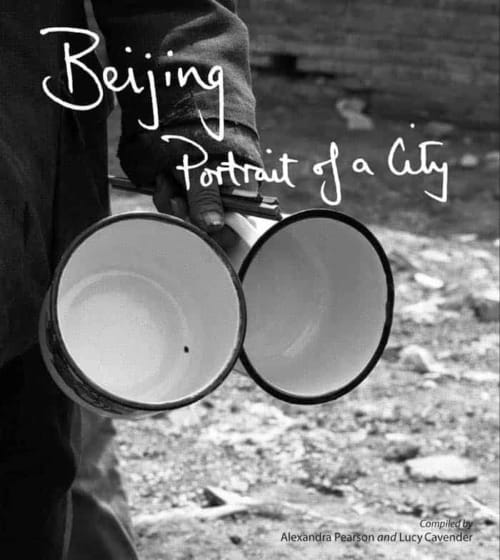
and Lucy Cavender
Beijing: Portrait of a City is the shared work of some of the city's finest writers who lead us through ‘hutong’ alleys, antique markets, artists' communities, gay bars, parks and the nostalgic streets of memory. They beguile with poems, amuse with camel anecdotes and thrill with two murder stories – one a genuine antique, the other a fictional contemporary. They take us back to the often-ignored Mongolian roots of the city and project forward to ask whether spectacular modern architecture will suffice to return Beijing to what it sees as its ancient place at the centre of the world.
The book interweaves its written work with a collection of wry and telling photographs of different aspects of the city, creating a compelling portrait of Beijing.
The contributors – including Zhu Wen, Adam Williams, Roy Kesey, Ma Jian, Alfreda Murck, Tim Clissold, Catherine Sampson, Peter Hessler, Karen Smith, Paul French, Michael Aldrich, Hong Ying and Rob Gifford, all published authors and experts in their field – have spent many years living in Beijing and know it from the inside. Their individual contributions combine to leave a highly original and unforgettable impression of one of the world’s oldest and most fascinating cities.
-
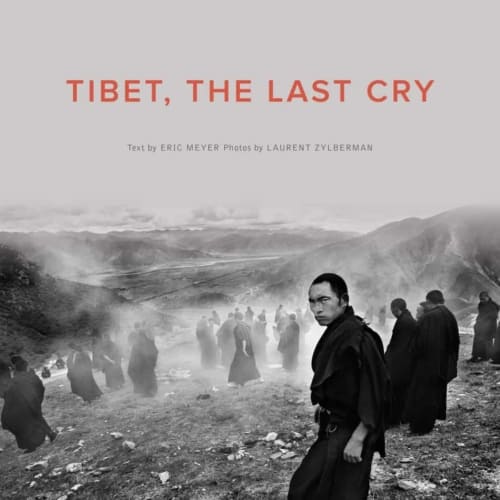
Eric Meyer and Laurent Zylberman were the only freelance journalists allowed into Tibet after the 2008 riots which left parts of Lhasa in ruins. They saw the friction between two cultures: police and soldiers patrol the towns, while crowds of Han immigrants pour into the region like new frontier settlers seeking their fortunes. Tibet is going through drastic economic change, shaking up ancient ways of life and altering the fragile ecological balance of the once-nomadic high plateau.
China is massively investing to turn Tibet into a modern country. Downtown shops crammed with made-in-China fashion are run by battalions of saleswomen in uniform, and nightclubs draw crowds of Tibetan teenagers in search of Western music.
A series of black-and-white photographs intertwine – often in a single shot – the clashes between two very different communities who have never fully understood each other. Narrated day by day, both text and images immerse the reader in an eye-opening journey across the roof of the world.
Look inside this book
Click on these links to read pages from Tibet, the Last Cry. You will need a pdf reader to view these excerpts. -
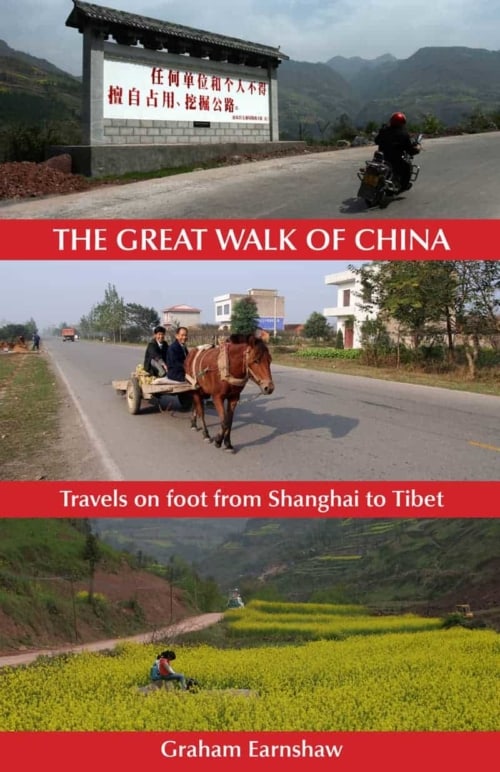
What kind of people would you meet if you decided to walk across the world's most populous country?
The Great Walk of China is a journey into China's heartland, away from its surging coastal cities, where the ripples of prosperity are only just beginning to be felt and many find themselves left behind.
Through his conversations with the people he meets along the way, the Chinese-speaking Earnshaw paints a portrait of a nation struggling to come to terms with its newfound identity and its place in the world. Our wandering guide never backs away from sensitive and sometimes uncomfortable topics, and captures the essential kindness and generosity of the Chinese people with brilliant clarity.
Look inside this book
Click on the following link to view sample pages from The Great Walk of China. You will need a pdf reader to view this excerpt. -
Out of stock
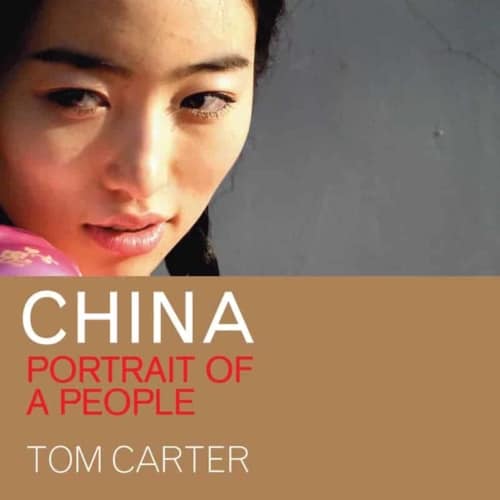
with foreword by Anchee Min and epilogue by Mian Mian
The Beijing Olympics focused the world's eyes on China. But despite increased tourism and rampant foreign investment, the cultural distance between China and the West remains as vast as the oceans that separate them. The Middle Kingdom is still relatively unknown by Westerners.
China is in fact made up of 33 distinct regions populated by 56 ethnic groups – and American photojournalist Tom Carter has visited them all. This little book is a visual tribute to the People's Republic of China, with an ardent emphasis on the People.
Look inside this book
Click on the links below to see sample pages from CHINA: Portrait of a People. You will need a pdf reader to view these excerpts. -
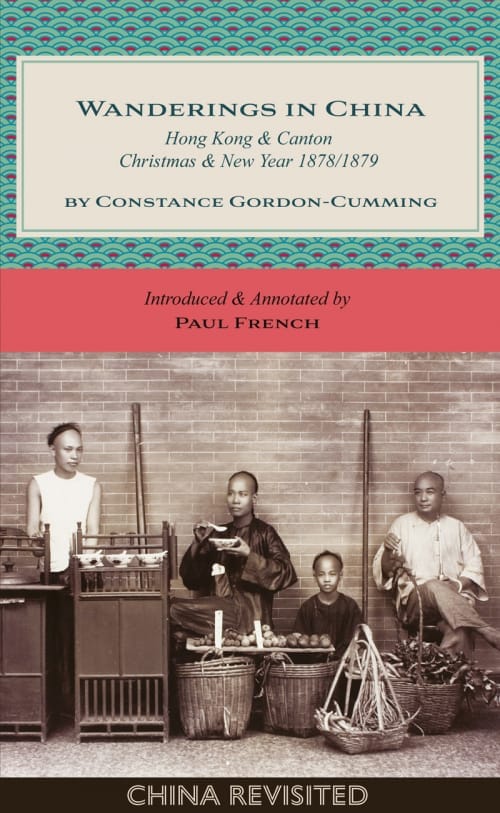 By Constance Gordon-Cumming, introduced and annotated by Paul FrenchNo. 2 in the China Revisited seriesInveterate Victorian traveller and prolific artist Constance Gordon-Cumming, born in Glasgow in 1837, roamed far and wide from the Scottish Highlands to the American West; the islands of Hawaii to southern China. Even among her many adventures, her 1878/1879 trip to Hong Kong was momentous. Gordon-Cumming arrived just before Christmas 1878 to inadvertently witness the terrible “Great Fire” of Hong Kong that swept devastatingly through the Central and Mid-Levels districts.She then moved on to explorations of the streets, temples and Chinese New Year festivities in Canton (Guangzhou). Her detailed descriptions of the teeming streets of the city’s commercial districts and New Year temple fairs contrast with her temporary residence in the relative calm of the foreign enclave on Shamian Island. Venturing out of the city on expeditions, Gordon-Cumming gives us perhaps one of the most complete descriptions of the now long-gone market gardens of Fa-tee with the famed nurseries that cultivated a bewildering variety of flowers and ornamental trees.
By Constance Gordon-Cumming, introduced and annotated by Paul FrenchNo. 2 in the China Revisited seriesInveterate Victorian traveller and prolific artist Constance Gordon-Cumming, born in Glasgow in 1837, roamed far and wide from the Scottish Highlands to the American West; the islands of Hawaii to southern China. Even among her many adventures, her 1878/1879 trip to Hong Kong was momentous. Gordon-Cumming arrived just before Christmas 1878 to inadvertently witness the terrible “Great Fire” of Hong Kong that swept devastatingly through the Central and Mid-Levels districts.She then moved on to explorations of the streets, temples and Chinese New Year festivities in Canton (Guangzhou). Her detailed descriptions of the teeming streets of the city’s commercial districts and New Year temple fairs contrast with her temporary residence in the relative calm of the foreign enclave on Shamian Island. Venturing out of the city on expeditions, Gordon-Cumming gives us perhaps one of the most complete descriptions of the now long-gone market gardens of Fa-tee with the famed nurseries that cultivated a bewildering variety of flowers and ornamental trees.Finally Gordon-Cumming returns to Hong Kong to observe the annual "Derby Day" races at Happy Valley in February 1879, a major event on Hong Kong’s Victorian-era social calendar. Gordon-Cumming is at one and the same time that rare travel writer who, while plunging into the throngs and crowds, manages to observe the minutiae of life around her.
“The flames rapidly gained the mastery, suddenly bursting from fresh houses here and there, where least suspected, and spreading from street to street. That night we stood watching this appallingly magnificent scene – the flames rising and falling, leaping and dancing, now bursting from some fresh house, shooting up in tongues of fire, now rolling in dense volumes of black smoke.”
-
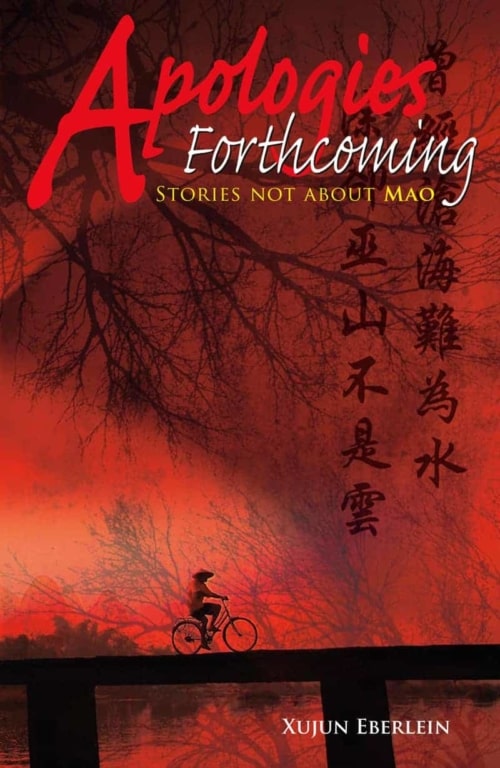
Winner of the third annual Tartt Fiction Award
It was some decade. The universities were closed. Students were at war. Poetry was banned. And the word “love,” unless applied to Mao, was expressly forbidden. Artists were denounced, and many opted for suicide. This is the time — its madness, its passion, its complexity — that Xujun Eberlein brings vividly to life in Apologies Forthcoming, her moving collection of short stories about the millions who lived during China’s Cultural Revolution.
An award-winning writer who now lives in Massachusetts, Eberlein has nothing to apologize for. Her stories are electrifying. About half of the stories take place during the years of the Cultural Revolution; the other half in its aftermath. How many come from personal experience is hard to say. Eberlein, who lived through the Cultural Revolution’s decade as a child and teenager, had a sister who died as a Red Guard, and that event seems fictionalized in one of the stories.
Apologies Forthcoming shines a revealing light on some of the people whose lives were changed forever by the ten years that turned China upside down. Eberlein does the great service of illuminating the interior lives of a peculiar generation, many of whom are now leading China’s phenomenal awakening.
Look inside this book
Click on the link to view sample pages from Apologies Forthcoming. You will need a pdf reader to view this excerpt. -
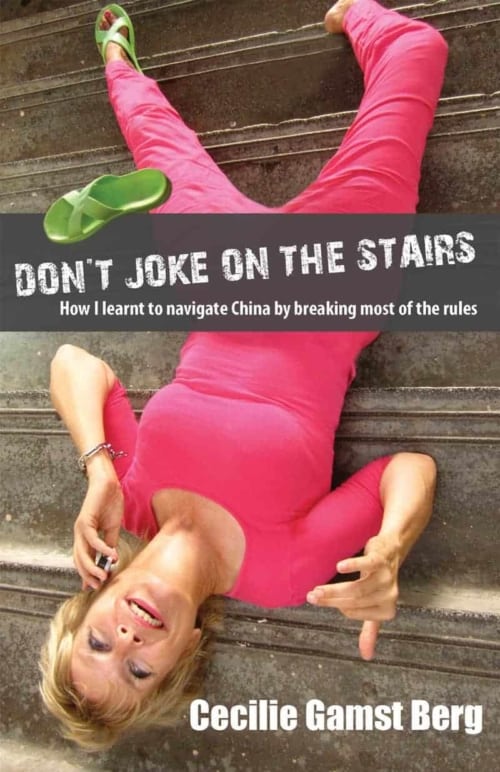
China – what’s not to love?
Join longtime Hong Kong resident and Cantonese fundamentalist Cecilie Gamst Berg as she ploughs through the non-stop surreal-fest that is today’s China, stopping occasionally to ruminate about the travails of trying to make Cantonese a world language, and how the Chinese have invented a new English: Manglish.
In this book you’ll find answers to everything you wanted to know about China, such as:
- What does “the slippery are very crafty” really mean?
- What’s the etiquette for hitch-hiking in really small cars?
- What’s the best way to gatecrash a Ketamine party?
- Indeed, what is modern party etiquette in China? And:
- How do you win a fist-fight with a hotel security guard?
Travelling by horse, train and sleeper bus from the deserts of Xinjiang, across the mountains of Tibet and Sichuan to the water buffalo fields of Hong Kong, Cecilie shows you how China is not only the most happening place on Earth, but also the most fun.
Look inside this book
Click on this link to view sample pages from Don't Joke on the Stairs. You will need a pdf reader to view this excerpt. -
 by Paul Ulrich Can the Chinese foil a US oil grab in the Middle East? This topical spy thriller captures the turmoil of the 'war on terror' and weaves agents of the Chinese Government into the plot, pulling the reader into a world of subterfuge and shifting alliances which may well mirror tomorrow's headlines. The story: A young China expert at the US embassy in Riyadh learns a shocking secret: the US will use a hostage crisis as a pretext to invade the Saudi kingdom and seize control of its oilfields. Meanwhile, the daughter of a radical cleric is desperate to escape an arranged marriage. As she attempts to flee the country, her half-brother becomes embroiled in an Al-Qaeda plot to drive out the American infidels -- a plan the newly assertive Chinese are determined to stop. As the US and China compete for mastery of the Gulf, an American diplomat risks betraying his country and a Saudi woman risks her life -- but what price betrayal in a land ruled and divided by harsh Islamic law? Look inside this book Click on the following link to view sample pages from Saudi Match Point. You will need a pdf reader to view this excerpt. Prologue
by Paul Ulrich Can the Chinese foil a US oil grab in the Middle East? This topical spy thriller captures the turmoil of the 'war on terror' and weaves agents of the Chinese Government into the plot, pulling the reader into a world of subterfuge and shifting alliances which may well mirror tomorrow's headlines. The story: A young China expert at the US embassy in Riyadh learns a shocking secret: the US will use a hostage crisis as a pretext to invade the Saudi kingdom and seize control of its oilfields. Meanwhile, the daughter of a radical cleric is desperate to escape an arranged marriage. As she attempts to flee the country, her half-brother becomes embroiled in an Al-Qaeda plot to drive out the American infidels -- a plan the newly assertive Chinese are determined to stop. As the US and China compete for mastery of the Gulf, an American diplomat risks betraying his country and a Saudi woman risks her life -- but what price betrayal in a land ruled and divided by harsh Islamic law? Look inside this book Click on the following link to view sample pages from Saudi Match Point. You will need a pdf reader to view this excerpt. Prologue -
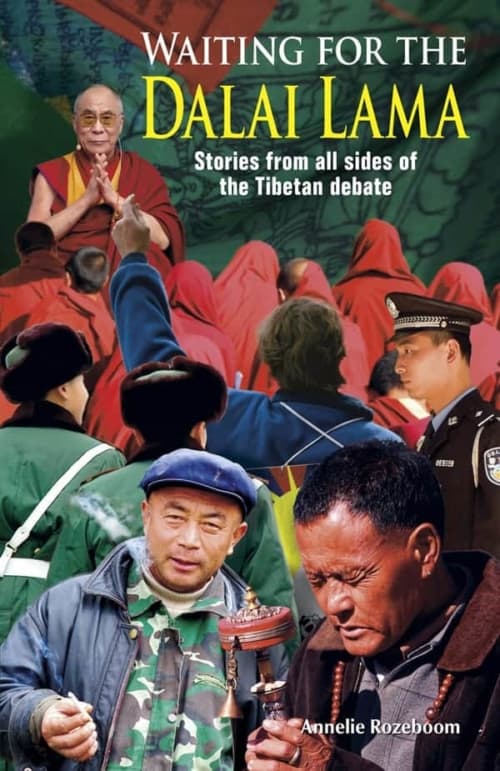
Why does the issue of Tibet rouse such passions on both sides? And is there any way to find common ground?
Chinese-speaking journalist Annelie Rozeboom worked as a foreign correspondent in China for ten years. During that time she was able to interview numerous Tibetan people inside and outside Tibet, as well as Chinese residents, Western observers and the Dalai Lama himself. As these people explain their life stories, it becomes clear to the reader why they think the way they do. The book also shows how history washed over this remote kingdom and how the Tibetans and the Chinese came to take such opposing positions.
Waiting for the Dalai Lama is a uniquely valuable book which approaches the emotive issue of Tibet from all angles.
Look inside this book
Click on this link to view sample pages from Waiting for the Dalai Lama. You will need a pdf reader to view this excerpt.